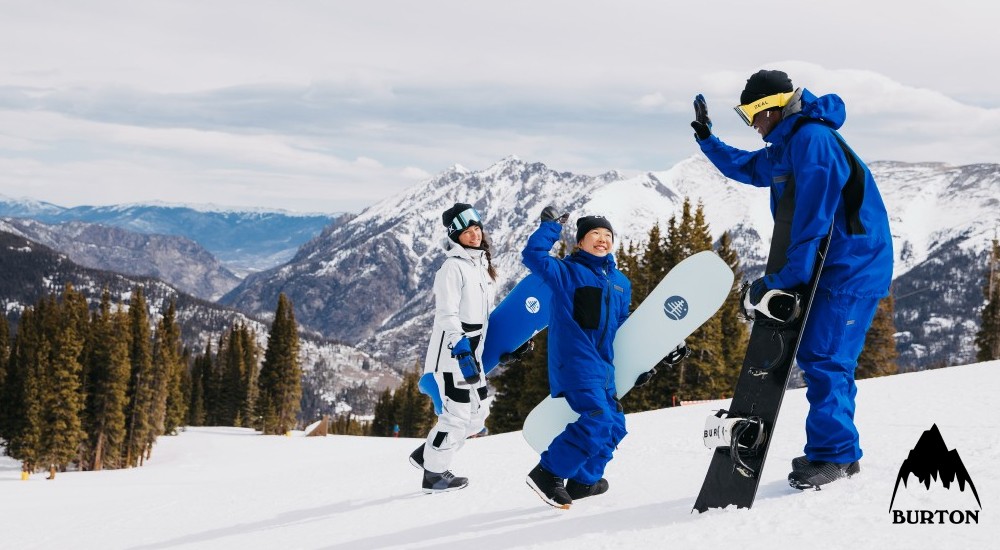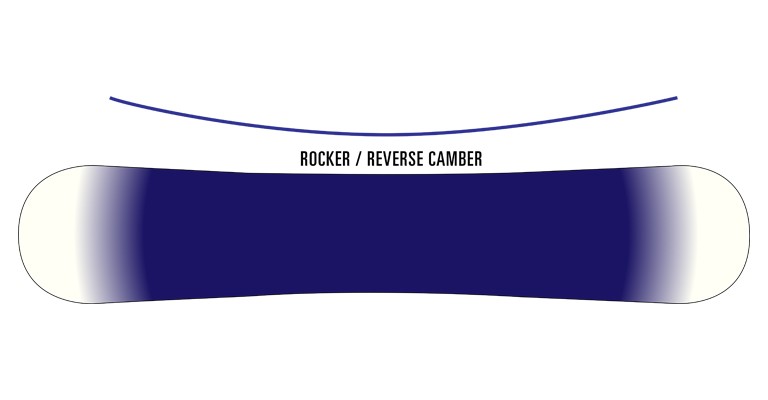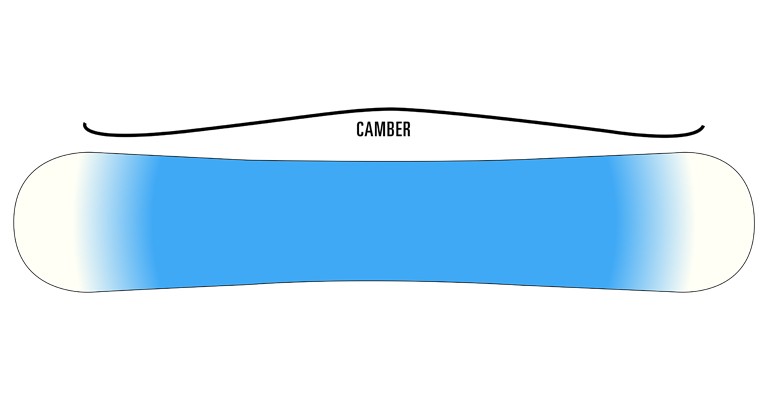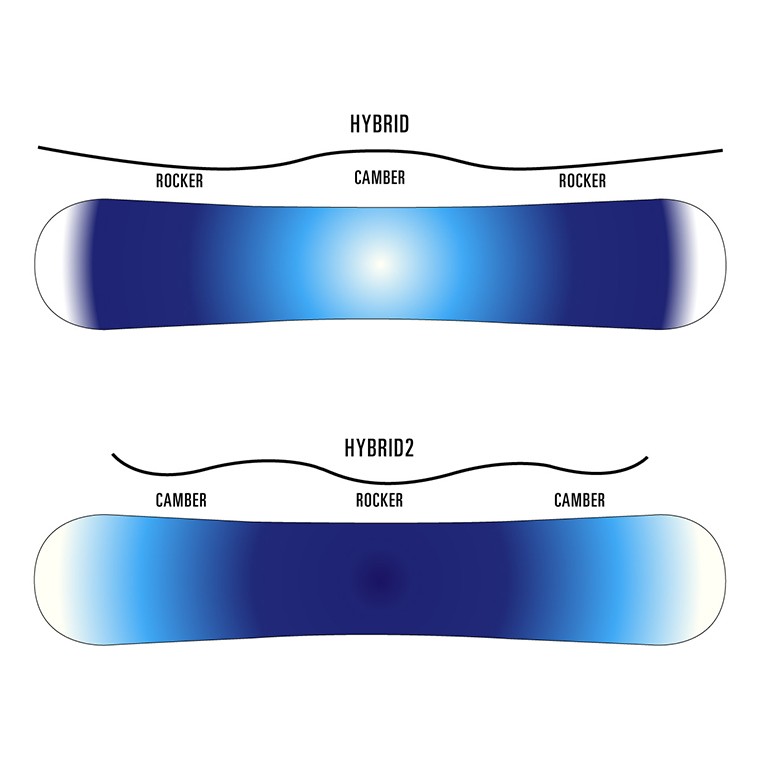How to Choose a Snowboard

From bunny hills to mountain slopes, snowboarding is a fun way to stay active during the winter months. Renting a snowboard is a great way to learn the basics, but after a few trips to the slopes, you might be itching to have your own snowboard. If you’re ready to buy your first snowboard, there are some important things you’ll want to understand including the length of snowboard you need as well as the type of snowboard and bend profile that matches your ability level and riding style. To help beginners, we’ve broken down all this information on how to choose a snowboard so you can find the right one for the slopes.
What Size Snowboard Do I Need?
As a beginner, there are a few factors that influence the length of snowboard you need including weight, ability level, and height. The most important factor for finding the right length of board is the rider’s weight because it influences how the board flexes while riding. The next factor to consider is the rider’s ability level. Usually, beginner riders want to use a shorter board (between 3-5 centimeters) than their weight recommends. This is because a shorter board is easier to maneuver and control. Last, your height is a factor mainly because often taller riders have a wider stance and may need a slightly longer board.
Snowboard Size Charts
Use the snowboard size charts below to narrow down the range of length your snowboard ideally should be. You’ll want to use this information paired with your ability level too.
Snowboard Size Chart by Weight
| Rider Weight (lbs.) | Snowboard Size (cm) |
|---|---|
| 80 or less | 90—135 |
| 80—110 | 135—146 |
| 110—120 | 142—148 |
| 130—140 | 146—152 |
| 140—150 | 148—154 |
| 150—160 | 151—156 |
| 160—170 | 152—158 |
| 170—180 | 153—159 |
| 180—190 | 155—161 |
| 190—200 | 157—163 |
| 200—210 | 158—165 |
| 210 and up | 159—168 |
Snowboard Size Chart by Height
| Rider Height (ft./in.) | Snowboard Size (cm) |
|---|---|
| 3’7” | 90—105 |
| 4’1” | 110—120 |
| 4’6” | 115—130 |
| 4’10” | 120—135 |
| 5’1” | 130—140 |
| 5’3” | 135—145 |
| 5’4” | 140—150 |
| 5’5” | 145—152 |
| 5’6” | 148—153 |
| 5’7” | 150—155 |
| 5’8” | 152—155 |
| 5’9” | 153—157 |
| 5’10” | 154—159 |
| 5’11” | 155—160 |
| 6’0” | 156—162 |
| 6’1” | 157—163 |
| 6’2” | 158—166 |
| 6’3” | 159—167 |
| 6’4” | 160—170 |
What Type of Snowboard Should I Get?
After determining your ideal snowboard length, you’ll want to think about your preferred style of riding since each snowboard type is suited to different terrain. In the simplest of terms, there are three main types of snowboards: all-mountain, freestyle, and powder. Each type of snowboard has its own features making them perform better on certain runs.
- nike air max retro 1991 black and yellow
- orange nike zoom vapor cleats football boots
- All-Mountain: All-mountain snowboards are generally considered the best option for beginners because they perform equally well on groomers, in powder, and even in the terrain park. Unless you’re planning on spending your time exclusively in the terrain park or backcountry, an all-mountain board will do the trick.
- Freestyle: Freestyle snowboards are ideal for riders who enjoy the challenge of terrain parks or performing tricks while on the mountain. Freestyle snowboards are lighter, more flexible, and shorter making them easier to maneuver and land tricks.
- Powder: Powder snowboards are designed to float in deep snow thanks to the large nose and tapered tail design. If you’re interested in riding ungroomed terrain with fresh powder, this type of snowboard is ideal for you.
Snowboard Profile: Camber vs. Rocker
Now that you know your preferred length and type of snowboard, the last part to consider is the snowboard’s bend profile. A bend profile is simply how the snowboard is shaped when looking at the side. There are three main bend profiles including camber, rocker, and hybrid. Each profile affects how the board feels on the snow.
Rocker Profile

With a rocker profile, the board will bend towards the ground in the middle while the edges are raised slightly. This bend profile is generally recommended for beginners because it’ll allow you to surf down the mountain without burying your board in fresh snow.
Camber Profile

When a snowboard has a camber profile, you’ll notice a slight arch towards the middle and the edges resting on the ground. This type of bend profile makes the snowboard great for hard carving and high-speed turns. A camber profile snowboard is more suited for intermediate to advanced riders as it’s easy to “catch an edge” and get a face full of snow.
Hybrid Profile

The hybrid profile bend is a combination of both the rocker and camber. Although you can find rocker-dominant and camber-dominant boards, the idea behind a hybrid profile is more versatility while on the mountain. Since this type of snowboard profile can be a bit unpredictable in terms of control, these aren’t typically recommended for beginner riders.
With the correct length of snowboard that matches your skill level and riding style, you’ll have a much better experience on the slopes. If you have additional questions about how to choose a snowboard, make sure to stop into your local WITZENBERG to speak with a snowboarding expert.
Did you know some WITZENBERG locations offer snowboard rentals and repair services? Check out your local store page for more information.